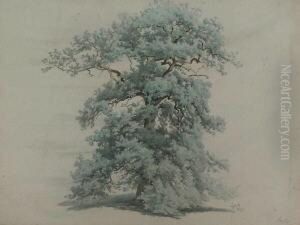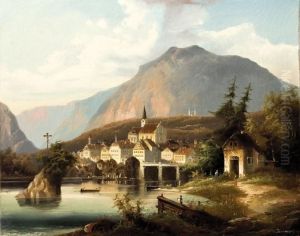Johann Wilhelm Cordes Paintings
Johann Wilhelm Cordes was a German landscape painter born on September 22, 1824, in Rinteln, Duchy of Brunswick. Cordes was part of the Düsseldorf school of painting, a group of artists who were connected to the Düsseldorf Academy, which became an influential art center in the 19th century.
Cordes studied at the Düsseldorf Academy from 1842 to 1847 under the tutelage of Johann Wilhelm Schirmer, who was a prominent landscape painter and professor at the academy. Schirmer's influence is evident in Cordes' work, particularly in his approach to landscape painting, which often involved a romantic and idealized representation of nature.
During his career, Cordes traveled extensively, finding inspiration in the varied landscapes of Europe. He visited Norway and Italy, where the dramatic scenery had a significant impact on his work. His paintings often featured grandiose and meticulously detailed representations of nature, imbued with a sense of the sublime and an emphasis on the awe-inspiring power of the natural world.
Cordes' landscapes were characterized by their atmospheric effects and the use of light to create mood and depth. He was skilled at capturing the unique qualities of the different environments he painted, from the rugged coasts and mountains of Norway to the serene Italian countryside.
Despite his talent and contributions to the landscape genre, Cordes did not achieve the same level of fame as some of his contemporaries. However, his work was appreciated in artistic circles, and he participated in several exhibitions during his lifetime.
Johann Wilhelm Cordes passed away on January 23, 1869, in Düsseldorf. Today, his paintings can be found in various art collections and museums, and he is remembered as a skilled practitioner of the Düsseldorf school's approach to landscape painting. His legacy continues to be appreciated by art historians and enthusiasts who recognize his ability to capture the grandeur and beauty of the natural world.

